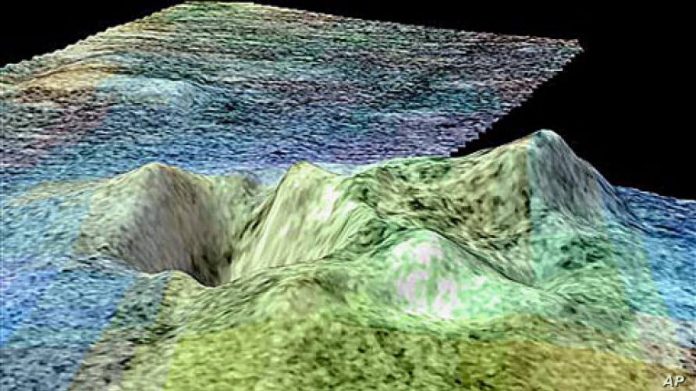The first global geological map of Saturn’s moon Titan is presented in a paper in Nature Astronomy this week. This map, drawn using data from Cassini, will add to our understanding of the history and evolution of Titan.
Titan is the only moon of the Solar System with a dense atmosphere and a full, methane-based hydrological cycle, which has a significant impact on its surface and evolution. However, its hazy atmosphere hinders our view of the surface, and it has been difficult to obtain a global vision of Titan’s geology.
Rosaly Lopes and colleagues use data from the infrared and radar instruments on board Cassini to reconstruct and map Titan’s surface, including its poles. They identify six major geological forms and determine their relative age and distribution across the globe. The map indicates that Titan’s geology depends strongly on latitude. The youngest terrains are dune fields that dominate the equator, and lakes, concentrated at the poles. However, the majority of Titan is covered by featureless organic plains, widespread at mid-latitudes.
These observations demonstrate the extent to which Titan is shaped by its methane cycle. The poles are humid enough to keep liquid bodies of methane, whereas the arid equatorial climate keeps wind-shaped dunes intact.















